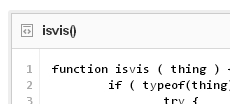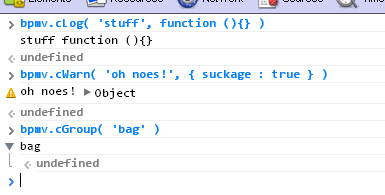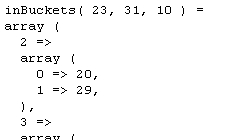A user on reddit, /u/printers_suck, spoke to the feeling of getting obsolete as a career goes on. The post and its linked-to article, On Being Overwhelmed With Our Fast Paced Industry, already had me thinking in the abstract. Having felt a small rut lately, my response was half to /u/printers_suck and half reminder to myself.
I’ve been in webdev for about two decades. If I’m fearing becoming obsolete, I’ve found that I’m actually paranoid of something else. Is my job itself sucking? Am I in a rut? Am I overworked? Am I just afraid of getting old?
There are some key practices that will keep you from being obsolete:
1. Never assume someone younger than you is dumber than you. I work with a lot of vibrant, brilliant, and sometimes head-in-the-clouds-shiny-new-thing-chasing young people. Always be willing to sit down with one of them so they can show you how to do something – it’s good for keeping up to date and great for collaboration. Be humble about it. Give them time to be the teacher.
2. Never say “no” just because you haven’t used something. Instead, get familiar with where it lies as being production-worthy. If it works better than what you have, use it. If not, scrap it or ignore it.
3. Speaking of scrapping things, don’t fall in love with your code. That wonderfully elegant thing you wrote yesterday? Be willing to dump it tomorrow. Keep iterating and evolving. Do so with an objective point of view. If you’re defending code simply because it’s yours, then you’re not arguing its merits.
4. Always be willing to re-think your position. There was a time when I would never even consider replacing Apache or lighttpd with Nginx. At the time, Nginx was not production-ready. These days, I can’t live without Nginx. Your prejudices, like your code, should be disposable from an objective point of view.
5. Finally, and it’s a cliche for a reason, never stop learning. If you haven’t learned something new for a long time (like a year), then it’s time to try something new just to keep those learning chops practiced. I’ve often found that just starting to learn again gets the whole process going again. (There’s a counterpoint to this though – never let learning a shiny thing distract you from real work that needs to be done.)
(Side note: One of the guys I work with, Cam, has been requesting that I write more experiential stuff down since I’ve had a long career in tech. Apparently, I can tell good water cooler stories. :) Here is my first official stab at it. Thanks for the prodding Cam!)


 Some JavaScript environments simply dont have the console object or don’t support all of the console functions. I get sick of either removing my debugging, doing oddball conditionals all over the place or re-writing the same wrappers all over again.
Some JavaScript environments simply dont have the console object or don’t support all of the console functions. I get sick of either removing my debugging, doing oddball conditionals all over the place or re-writing the same wrappers all over again.
 One of the biggest nightmares I’ve had to deal with is unpredictable cache keys. Inevitably, someone codes a function that uses its parameters in the key name. In many cases, this is fine. However, when you need to deal with paginated or grouped data in different sizes, things can get messy. To that end, I lean on PHP’s range() function.
One of the biggest nightmares I’ve had to deal with is unpredictable cache keys. Inevitably, someone codes a function that uses its parameters in the key name. In many cases, this is fine. However, when you need to deal with paginated or grouped data in different sizes, things can get messy. To that end, I lean on PHP’s range() function. Tonight I started using
Tonight I started using 
You must be logged in to post a comment.